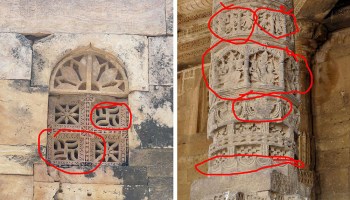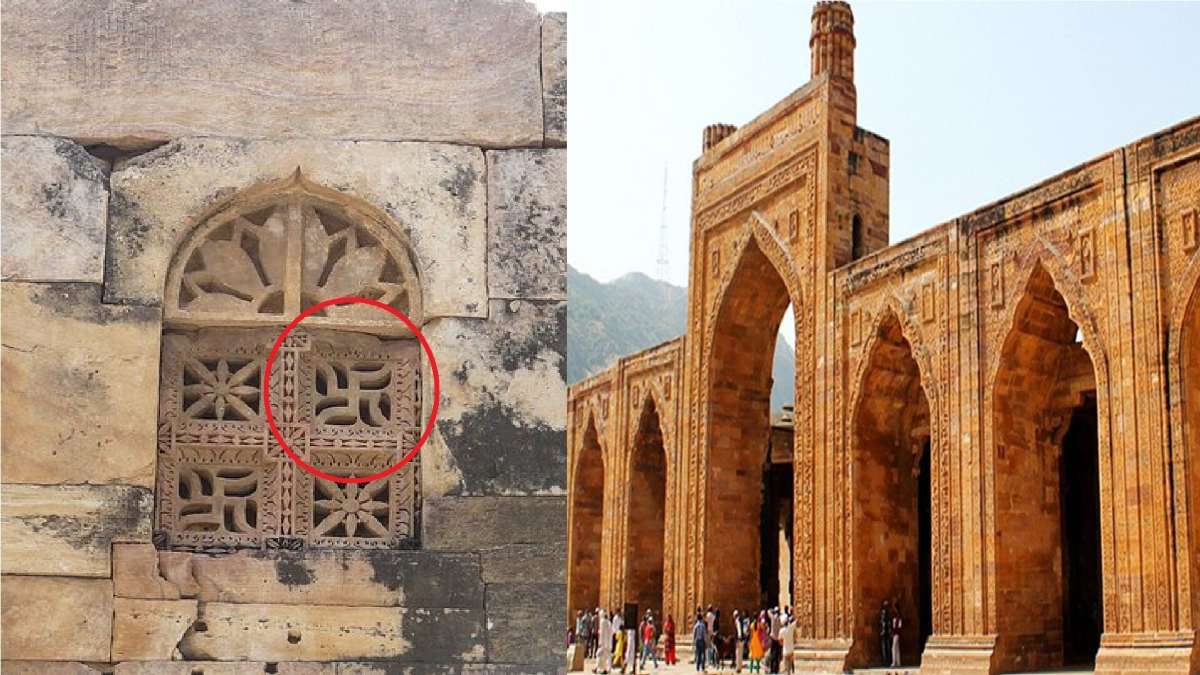The Adhai Din Ka Jhonpra (literally “shed of two-and-a-half days”) is a historic mosque in Ajmer, Rajasthan, recognized as one of the oldest surviving mosques in India and the oldest monument in Ajmer. Its history is layered, reflecting a blend of Indian, Hindu, Jain, and Islamic architectural influences, with a complex and debated past. Below is a concise overview based on available historical accounts:

Origins and Construction
- Pre-Islamic Period: The site originally housed a Sanskrit college and a temple dedicated to Goddess Saraswati, built by Vigraharaja IV (also known as Visaladeva), a ruler of the Chahamana (Chauhan) dynasty, around 1153 CE. Some sources suggest it was a Jain shrine as early as 660 CE, constructed by Seth Viramdeva Kala to celebrate the Jain festival of Panch Kalyanaka.
- Conversion to a Mosque: In 1192 CE, after defeating Prithviraj Chauhan III in the Second Battle of Tarain, Afghan ruler Muhammad Ghori ordered his governor, Qutb-ud-Din Aibak, to convert the site into a mosque. A legend claims the mosque, or at least its prayer wall, was built in just two-and-a-half days to allow Ghori to offer prayers, giving rise to its name. However, historical evidence suggests the full structure took longer, with completion around 1199 CE under the supervision of Abu Bakr of Herat.
- Beautification: In 1213 CE, Iltutmish, Aibak’s successor, enhanced the mosque by adding a screened wall with corbelled engrailed arches, a pioneering feature in Indian Islamic architecture. An inscription from 1200 CE names Abu Bakr ibn Ahmed Khalu Al-Hirawi as the construction supervisor.
Name and Significance
- The name “Adhai Din Ka Jhonpra” is not found in early historical records; it was simply called a “Masjid” until the 18th century. The name likely derives from a two-and-a-half-day fair (urs) held at the site to commemorate the Sufi leader Panjaba Shah, as per the Archaeological Survey of India (ASI). Alternatively, some Sufi scholars interpret it as a metaphor for the transient nature of human life.
- Another theory, less supported, links the name to the rapid construction of the prayer wall in 60 hours, as ordered by Ghori.
Architecture
- The mosque is a prime example of early Indo-Islamic architecture, blending Islamic and Indian elements. It features 70 ornate pillars, many reused from Hindu and Jain temples, adorned with intricate carvings and Kufic inscriptions. The structure includes a large courtyard, arched screens, and circular minarets at each corner.
- The pillars and walls retain Hindu and Jain motifs, hinting at the site’s pre-Islamic heritage. Historians note that Hindu masons, under Afghan supervision, constructed much of the mosque, preserving Indian architectural features.
- Scottish historian James Fergusson and ASI archaeologist Alexander Cunningham praised its design, comparing its ornate details and craftsmanship to the finest global architectural works.
Historical Context and Controversy
- The mosque’s construction involved the destruction of the earlier Sanskrit college and temple, a point of contention among historians and modern groups. Some Hindu and Jain organizations claim the site was originally a grand Hindu or Jain temple, with visible remnants like carved pillars supporting this view.
- In 2024, Jain monk Sunil Sagar Ji Maharaj inspected the site and claimed it as a Jain temple, reigniting debates about its origins. Hindu organizations have also raised claims, especially in light of broader temple-mosque disputes in India.
- The mosque was used as a place of worship until 1947, after which it was handed over to the ASI’s Jaipur circle. It is now a protected monument, open to visitors of all faiths.
Later Developments
- Repairs were conducted under British rule (1875–1878 under Lord Mayo and 1900–1903 under ALP Tucker) and by ASI archaeologists like Alexander Cunningham and D.R. Bhandarkar in the early 20th century.
- The mosque was largely ignored in later Islamic chronicles (e.g., Khalji, Tughlaq, Lodi, and Mughal records), indicating its diminished political significance over time.
Current Status
- Today, Adhai Din Ka Jhonpra is a major tourist attraction near the Ajmer Sharif Dargah, valued for its historical and architectural significance. Its blend of Hindu, Jain, and Islamic elements makes it a unique cultural landmark.
- Ongoing debates about its origins reflect broader discussions on India’s historical syncretism and religious heritage. For the latest updates on such controversies, check trusted sources like the ASI or local news outlets.
For further details, you can visit the Archaeological Survey of India website or explore primary sources like inscriptions noted in historical records. If you need specific images or more details about visiting, let me know!

